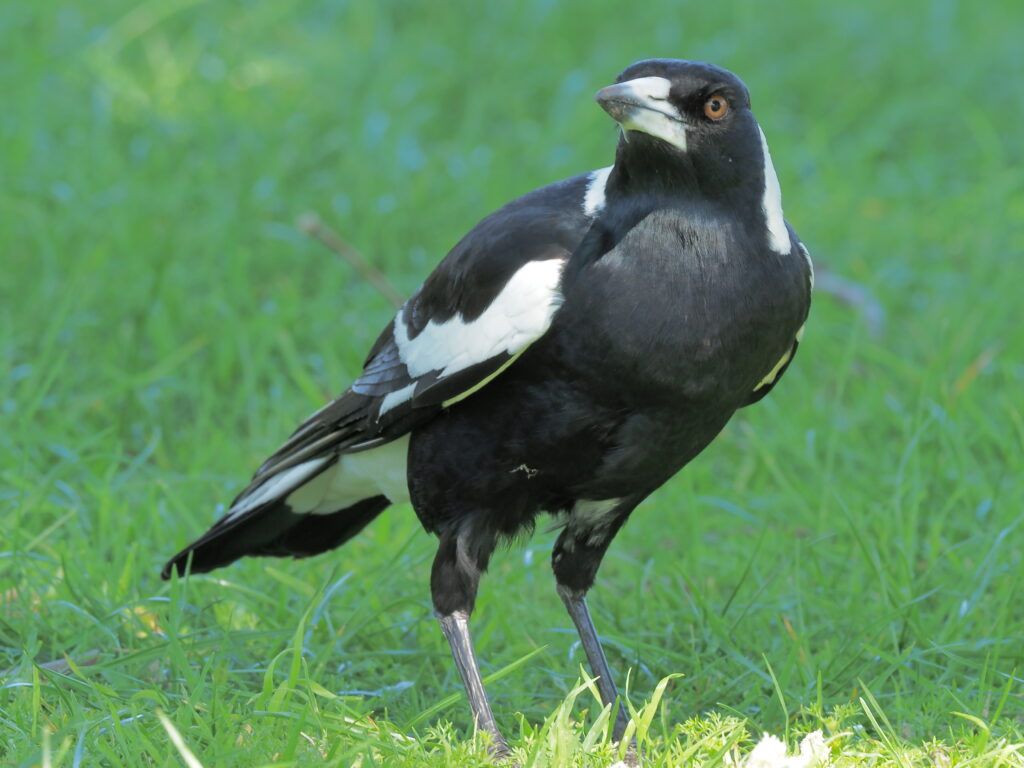Unlike most of us in the Northern Hemisphere who are gearing up for cool autumn temperatures, Australia is entering springtime. This means warm temperatures, flowers in bloom, and a period of anticipation for the hot humid summer months to come. For cyclists and park-goers this also means danger from above.
Related Article: Flamingo Sightings Throughout the Southeast After Hurricane Idalia
Magpies are among the most iconic of Australia’s birds, along with emus, cockatoos, and kookaburras, of course. While they share their name with the magpies of the Northern Hemisphere, Australian Magpies are different. Also known as Pied Butcherbirds, Australian Magpies are songbirds belonging to the Artamidae family. They are neither corvids, like true magpies are, nor closely related to the corvid family, despite the resemblance that they share.
Many corvids are known to “mob” predators that enter their territory as a means of protecting their nests and offspring. These fearless brazen attacks on larger predatory animals are not unique to corvids, but this behavior may be one way in which the Australian Magpie carries a bit of corvid spirit.
Swooping Season is the name often given to Australian springtime on account of territorial magpie behavior. During the nesting season, magpies may grow fiercely defensive of their nests and young, dive-bombing anyone who comes close enough to pose a threat. Most of the time, they are harmless, but swooping magpies have been known to cause serious damage under the right circumstances.
Earlier this month, a cyclist in Melbourne was attacked by a magpie that injured his eye, causing him to lose sight for a time until a “miraculous” surgery could be performed. While most do not receive a peck to the eye, many cyclists have born the brunt of magpie attacks to the extent that it is quite common to see cyclists wearing “anti-magpie” helmets during the spring season. These are often normal bike helmets affixed with zipties and pipe cleaners to deter the swooping birds.
Supposedly, only about 10% of magpies swoop at humans, however they are common enough birds that swooping incidents are quite widespread. It is often said that they will rarely ever swoop at someone who is facing them, so conventional wisdom suggests that pedestrians walking through a magpie’s territory should make eye contact and walk slowly past.
Swooping can be alarming and even dangerous behavior, however it is important to remember that these birds are simply acting on an intense protective instinct. It is this instinct that allows them to guard their young against predators.
Popular Article: Endangered Secretary Bird Hatches in San Antonio

